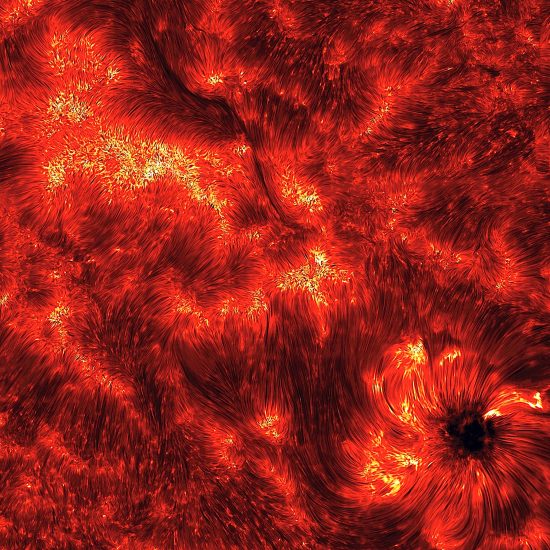
Nov 18, 2019
According to consensus theories, there is an electric dynamo inside the Sun.
“Why Does the Sun Really Shine? (The Sun is a Miasma of Incandescent Plasma)”
— They Might Be Giants
Modern theories see two forces driving the solar engine, each of which involves the Sun’s electromagnetic field. One force is the stretching of magnetic fields due to the Sun’s rotation (change in rotation rate), caused by differences in latitude. The other is a twisting force, caused by structures rising up from the Sun’s interior. The former is called “the omega effect” and the latter is called “the alpha effect”. Both require magnetic fields to act like they are material objects that can be mechanically altered. Stretching and twisting implies solidity, but magnetism is an invisible force.
In the consensus view, the electrical environment in and around the Sun is commonly ignored, if it is even acknowledged to exist. The Sun is thought to be “hot gas”. The various plasmas (mostly hydrogen and helium), and the way that they behave, are not seen in an electrical context, but rather, in one of intense gravity. As one science journal reports: “…the magnetic fields on the visible surface and gigantic plasma currents, bubbling up from the star’s interior…” are responsible for variations in the Sun’s output.
Granulation, in their view, is due to hot plasmas from within the Sun, except that the plasmas act like “a boiling teapot”. The plasma is “roiling”, or rising and falling, so that is what they believe forms the granular photospheric phenomenon.
A principle of Electronic Sun theory is granulation. Except, in the electrical proposal, it is where dense anode tufting is seen. Since the photosphere can be compared to a discharge tube’s positive electric terminal, events similar to those seen in a neon lamp will be observed, such as a hotter and brighter area just above the electrode’s surface. That glow corresponds to the chromosphere, just above the Sun’s photosphere.
The photosphere can be thought of as the anode surface. When electric charge density exceeds the containment ability of the anode surface, a secondary plasma forms. That is anode tufting. The characteristic pattern of granulation on the Sun forms because tufts are packed together so tightly in the photosphere.
Stars shine because electricity flows through the galaxy. As mentioned many times, stars can be thought of as giant electric fields. It is this simple hypothesis that best matches observational evidence. Any fusion takes place on the surface of an electric star like the Sun and not “deep in its core.” Electricity flowing through the solar plasma creates the Sun’s dynamic magnetic field, so no convective regions, transition zones, or alpha and omega effects are required.
As written in other Pictures of the Day, the Sun is a positively charged electrode in a circuit that is connected to a negatively charged electrode far beyond the planetary orbits. The electric model sees all solar activity resulting from fluctuations in electric power coming from the Milky Way. Ubiquitous, low density Birkeland current filaments move through the Solar System, supplying more or less power to the solar electric circuit in the form of electron drift toward the Sun.
The Sun is an electrical phenomenon, so its energy is focused from outside and not expelled from inside. An electric field is the Sun’s ordering factor, so variability in that field makes it a variable star.
Stephen Smith
The Thunderbolts Picture of the Day is generously supported by the Mainwaring Archive Foundation.












